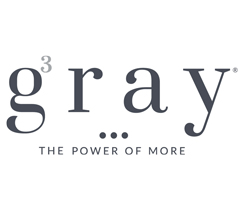Senate pushes energy incentives
Increased grant money for energy production and efficiency has gotten a boost in Congress with the Senate Energy & Natural Resources Committee’s approval of the Energy Policy Act of 2003. Senate leaders plan to combine it with other legislation giving tax breaks for the propane industry.
The combined bill would include the Energy Tax Incentives Act passed by the Senate Finance Committee (see the May column), with a few modifications. The tax credit for alternative fuel stations, for instance, is expanded to include the costs of training to use them. The plan also calls for adding the CLEAR Act (April column) that would give tax breaks for of 30 cents, 40 cents and 50 cents on propane purchasesover the next three years.
The bill also includes:
- A requirement that federal agencies increase energy efficiency by 20 percent over the next decade. New federal buildings would have to buy energy-efficient products.
- A requirement that the Interior Department provide technical assistance to improve home energy efficiency in Indian reservations. Also, states could use Community Development Block Grant money to improve energy efficiency in public housing.
- Energy efficiency grants from the Department of Energy for research, development, conservation and commercial use of energy totaling $616 million in 2004, $695 million in 2005, $772 million in 2006, $865 million in 2007, and $920 million in 2008.
- Authorization of $3.4 billion for the Low-Income Home Energy Assistance Program in 2004-06. The Senate would also give the Department of Health & Human Services a year to recommend changes in the state distribution formula to consider local fuel costs.
- $125 million a year through 2006 for State Energy Conservation Grants.
- $325 million in 2004, $400 million in 2005 and $500 million in 2006 for the
Weatherization Assistance Program. - An energy efficiency standards study by the National Academy of Sciences to find the best way to measure energy efficiency. NAS would get a year to explore measuring overall energy used, improvements, whether it’s best to measure only use at the final site or include energy at the source and distribution lines, etc.
- A new, Low-Income Community Energy Efficiency Pilot Program, $20 million a year for three years for competitive grants for development, conservation, efficiency, research, planning, training and technical aid to governments, to help communities with energy needs.
- A $50 million a year energy Efficiency Appliance Rebate Program in grants to states to give rebates to consumers who buy energy efficient products for years 2004-08.
Briefly Speaking
- Cargo tank shutoff
RSPA has revised its rules for construction and maintenance of cargo tank vehicles, effective Oct. 1. Starting in 2006, all manually activated, on-vehicle remote shutoff devices for closure of a cargo tank’s internal shutoff valve must be marked “Emergency Shutoff.’’
Testing is required whenever a pipe, valve hose or fitting gets repaired or replaced without welding. At NPGA’s request, RSPA exempts cargo tanks in dedicated compressed gas service provided they get other testing. Details are in the April 18 Federal Register.
- Stock build
Propane stockbuilds through late May were on target to reach or exceed the most recent five-year average May build of 9.3 million barrels, according to the Energy Information Administration. Inventories of 28.9 million barrels still track below the average range for this period, but EIA officials say the expectation of strong imports through June improve the likelihood of getting inventories back within the normal range.
















